Apple TV (2015) vs Amazon Fire TV 4K: What to expect
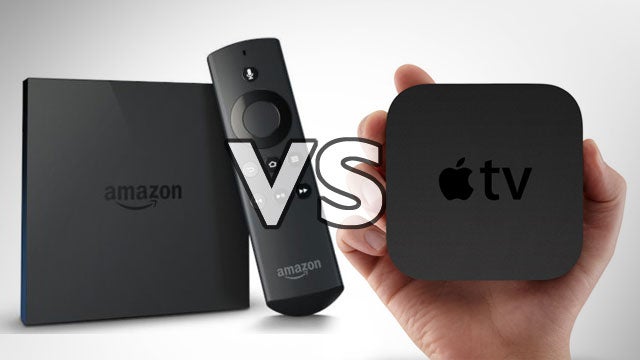
Which streaming set-top box comes out on top? Amazon Fire TV 4K vs Apple TV (2015)
Amazon and Apple both recently announced new media streaming boxes that are set to land in October.
While the new Amazon Fire TV represents an incremental improvement over last year’s impressive original, the new Apple TV marks a considerable leap forward from the outgoing model.
Considering that old model was launched in 2012, however, that’s really the least that could have been expected from Apple.
It does mean, though, that for the first time we can compare Apple’s and Amazon’s current visions for the future of living room entertainment like-for-like, with no cross-generational disparity.
Here’s how the two new set-top boxes stack up at this early stage.
Amazon Fire TV vs Apple TV: Design
Neither of these set-top boxes marks a radical departure from their predecessors from an external viewpoint.
With the new Amazon Fire TV, it really is a case of spot the difference. It’s essentially the same black square plastic tile design as before, with almost identical dimensions.
Meanwhile, the only way you could tell that the new Apple TV is the new Apple TV at a glance is if you saw it from the side – it’s a good 10mm thicker than the previous model. Otherwise, it’s got the same rounded-square ‘app icon’ design as before.
All of this means that the the Apple TV is squatter and boxier than the Amazon Kindle Fire TV, occupying a smaller footprint at 98mm x 98mm versus 115mm x 115mm, whilst sitting roughly twice as high at 35mm versus 17.8mm.
Both compact, all-black boxes are designed to disappear into an under-the-TV set-up, and both appear set to do so successfully.
Related: What is 4K and Ultra HD?
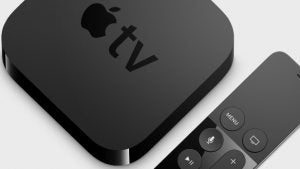
Amazon Fire TV vs Apple TV: Remote Controls
Unlike alternative devices like the Google Chromecast, both the Fire TV and the Apple TV come with remote controls for navigating the UI.
The Amazon Fire TV remote is virtually unchanged from its previous guise. Amazon says that it’s been improved with 20 percent lower latency and 40 percent longer battery life, but it’s design remains the same.
That means there are seven control buttons and a directional pad (with an extra select button in the middle). One of those buttons offers access to the remote’s built-in mic for voice control (more on which later).
The Apple TV remote, meanwhile, marks a significant physical departure from previous examples. It has six control buttons, which combine with a clickable touchpad that works in much the same way as a MacBook trackpad. Like the Amazon Fire TV, one of those fascia buttons is dedicated to voice control.
Both remotes use Bluetooth 4.0 to communicate with their respective boxes, which means that they don’t need line-of-sight to operate. Again, this shows that both Apple and Amazon are happy for you to tuck these boxes away out of sight.
One area in which the Apple TV remote appears more advanced than the Amazon equivalent is in its built-in gyroscope and accelerometer set-up, which enables it to respond to being waved around like a Wii remote – the applications of which we’ll discuss in a later section.
The Apple TV remote also comes with an IR emitter, which allows it to act as a remote for your TV as well.
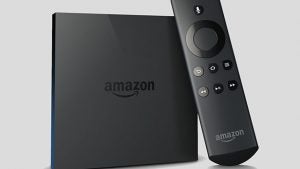
Amazon Fire TV vs Apple TV: Operating System and UI
The big difference between the two boxes is of course their operating systems. The Apple TV runs a version of Apple’s own iOS, called tvOS, which you won’t find on any of Apple’s other devices.
The Fire TV runs Android, but like other Amazon Fire devices, it’s a heavily modified version that utilises HTML 5 for a very slick experience.
Each custom software puts media content at the fore, where content images fill your screen for a rather beautiful experience for TV and movie content, regardless of the box you’re using.
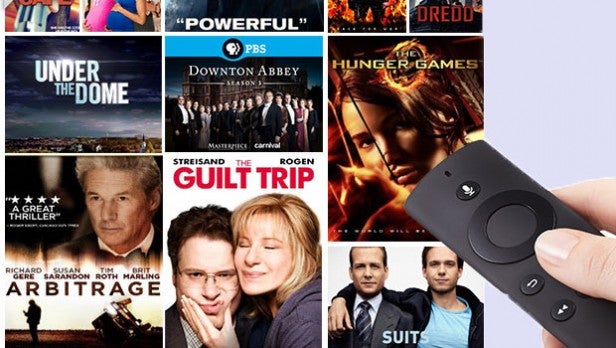
There are philosophical differences evident in the two UIs. With the Amazon Fire TV, Amazon content is key, and so all Amazon Prime Instant Video content is immediately accessible directly from the home screen, without having to navigate through separate apps.
Apple’s vision for TV, like its vision for mobile phones and tablets, is app-driven. It’s all about the chunky icons that lead to specialised content, though it looks as if hovering over individual icons will highlight TV and movie content within, negating the need to dip in and out of them as you would on your iPhone – at least on Apple’s own services.
Also, Apple has wisely tied together the content from various apps through its powerful search system. Seek out a piece of content, and you’ll be showed which service it’s available through, be it iTunes, Netflix, Hulu, Showtime, HBO or other supported services yet to be announced. Presumably the UK options will shape up a little differently.
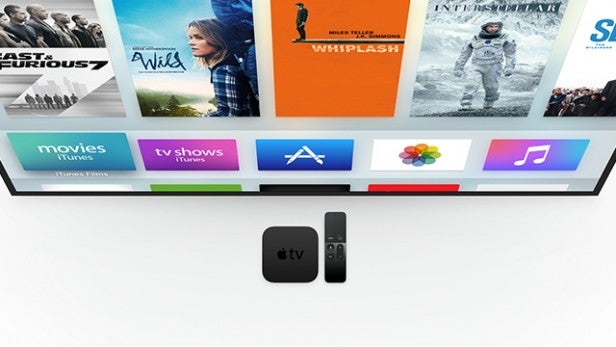
Both boxes make a big deal out of having voice control. Amazon was first here, enabling you to search for content using vocal commands. However, from our early look, Apple’s Siri implementations appears to be a little smarter and more deeply integrated.
Part of that is the aforementioned cross-service search function, which means that voice control is more useful more of the time on the Apple TV. But there are also little touches like the ability to ask Siri to look for comedies starring a certain actor, or its ability to skip back 15 seconds and temporarily turn subtitles on when you ask it “What did she say?” if you missed a line of dialogue.
The Amazon Fire TV has Alexa up its sleeve, the same voice assistant found on the brand’s Echo. Seemingly restricted to the US at launch, she’ll be able to help find content to watch but also bring up useful information like the weather.

Of course, if the vast majority of your media consumption is done through Amazon – a not entirely outlandish proposition given the company’s epic reach – then the Amazon Fire TV’s interface and features will be much more useful than anything Apple can produce. Indeed, we suspect that for many people, all of these discussions around relatively minor technical or UI differences will pale into insignificance compared to the really important question: are you an Apple person or an Amazon person when it comes to media consumption?
It’s only those of us in the middle that will really have a decision to make.
Related: Apple TV apps you’ll want to download first
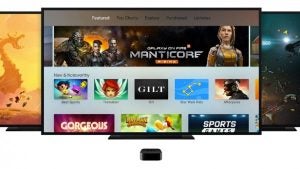
Amazon Fire TV vs Apple TV: Gaming
Both boxes are advanced media players first and foremost, but both boast games console functionality as a major secondary feature.
Amazon led the way in this with the original Fire TV, which had more processing power than its contemporaries as well as a custom-made games controller and a commitment from Amazon to provide enhanced gaming apps with full controller support.
Perhaps understandably, then, the new Amazon Fire TV doesn’t do much to modify or advance that initial approach, beyond the fact that the hardware is much more powerful.

On the downside, the fact that the dedicated games controller is optional (and at £34.99, rather expensive) means that games were never likely to fully take off for the Amazon Fire TV.
It’s also true that we haven’t seen a rush of high quality original games to the Amazon Fire TV. It simply doesn’t have the thriving App Store environment or massive user base to justify top developers giving it their attention. That’s one field where Apple could truly clean up, if it plays its cards right.
Apple, for its part, has provided no dedicated games controller of its own. Rather, it has stipulated that all games available for its new Apple TV must be compatible with the stock remote. Third party MFi controllers are supported, but games that work exclusively with such specialist peripherals will not be permitted onto the App Store.
Related: Why the new Apple TV isn’t the console you’ve been waiting for
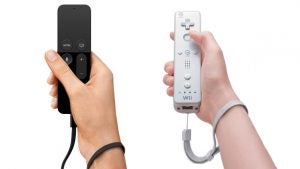
The flip side of this consistent experience is the fact that the Apple TV remote doesn’t appear to be a particularly good games controller in a traditional sense. Flipping it onto its side gives the approximate sensation of a classic gamepad, but it’s a little too small, the touchpad appears to be a somewhat fudged d-pad fill-in, and the rest of the buttons are too awkwardly placed to result in a truly comfortable control pad experience. We sincerely hope to be proved wrong on this one.
You can only use one Apple remote at a time, too, with additional players needing to use an iPhone as a second pad. Again, this provides accessibility on one hand, but could compromise the nature of the games that are provided.
It should make for a fine casual gaming controller, however, with its in-built gyroscope and accelerometer promising to offer Wii-like motion controls. Expect plenty of fun bat-and-ball games and Wii Sports rip-offs in the wake of the new Apple TV’s launch. Whether that’s a good or a bad thing depends on what kind of a gamer you are, we suspect.
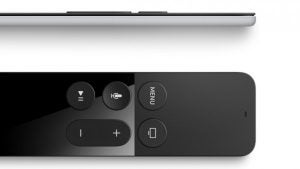
As these controller constraints and features suggest, Apple isn’t taking on the hardcore PS4 and the Xbox One consoles here. Rather, it’s looking to provide a means for playing simple iOS-like games on your TV, with all of the accessible thrills and inherent limitations that this suggests. It could also hoover up those casual gamers who have been floating around with a vague game-shaped itch ever since their Nintendo Wii went to the local car boot sale.
Amazon Fire TV vs Apple TV: Hardware
Both of these set-top boxes are powerful bits of kit – certainly well in excess of other media streaming devices we’ve seen up to now.
The new Amazon Fire TV sports a MediaTek quad-core CPU that’s apparently 75 percent more powerful than last year’s model. As we’ve discussed, the original Amazon Fire TV was pretty punchy for its time, so this bodes well for general performance (and that of games).
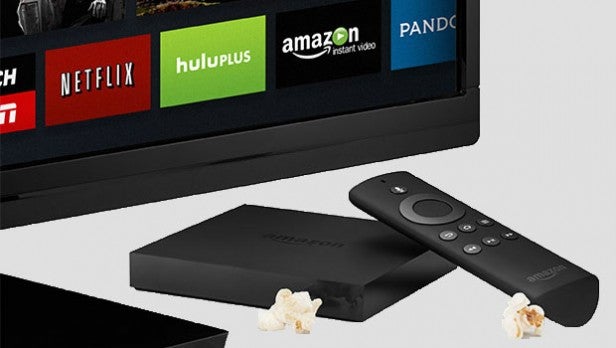
Of course, one of the headline ways in which this power will be put to use is in outputting 4K content. It’ll the first such device released in the UK capable of doing this, and more importantly, it’s a feature the new Apple TV doesn’t support.
The Apple TV might be stuck with good old 1080p Full HD video output, but that will be perfectly sufficient for the vast majority of TV owners in late 2015 (and quite probably through 2016 too).
Besides its more limited video output, the Apple TV is a capable bit of kit too. It might run on the A8 chip found in last year’s iPhone 6 rather than the A9 chip found in this year’s iPhone 6S, but that’s still a highly capable dual-core 64-bit chip. Anyone who’s played one of the more graphically intensive games on the App Store over the past 12 months will know precisely what this hardware is capable of.
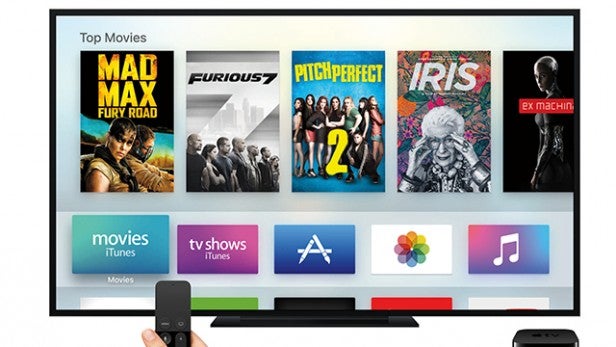
Elsewhere, the Apple TV has much more internal storage than the Amazon Fire TV – 32GB or 64GB versus 8GB. This reflects Apple’s app-focused strategy more than anything else, with Amazon clearly intending you to stream most of your media via the cloud.
In the Fire TV’s defence, it comes with expandable storage via a microSD slot. Unsurprisingly, the Apple TV doesn’t offer any such facility.
Both boxes come with advanced 802.11ac Wi‑Fi with MIMO, which should make for a stronger and more stable connection than previous set-top boxes – particularly handy in devices that are going to be streaming a lot of HD content.
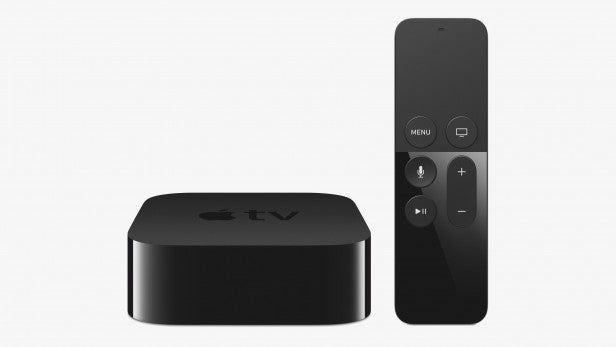
Amazon Fire TV vs Apple TV: Price
Regardless of their relative merits, there’s no doubting that there’s a sizeable disparity in the prices of the Apple TV and the Amazon Fire TV.
The new Amazon Fire TV costs £79.99, while the Apple TV costs $149 for the 32GB model and $199 for the 64GB model. We don’t have any UK prices just yet, but you can bet that the prices are going to star from well in excess of £100.
Early Verdict
We were highly impressed with the first Amazon Fire TV when it arrived last year, and the incremental improvements made with this latest model suggest that it’s unlikely to drop too much in our estimation.
Of course, when that first Amazon Fire TV came on the scene, it had a hopelessly out of date Apple TV to content with. It won’t have things so easy this time around.
Apple’s latest TV effort is the real unknown here, as it’s a pretty sizeable advance on previous efforts. Will its new Siri-and-app-driven interface really fit in a living room setting? Will that multi-functional remote control prove to be a flexible triumph or a fudged, fidgety annoyance?
Our early hands-on time with the Apple TV suggests that Apple has a slick and compelling media streamer on its hands, with an interface that appears capable of trumping Amazon’s. But we have doubts over its gaming potential, not to mention the question of whether we really want or need an extension of iOS in our front rooms.
If you’re heavily invested in Amazon’s media ecosystem, or you have a 4K TV set, there appears to be only one choice here. For the rest, it’s looking like Apple could have the more compelling package at this early stage.
It seems clear that Apple and Amazon have elbowed their way to the front of the dedicated media-streaming box queue. October will reveal which, if either, deserves to disappear into your TV set-up.


